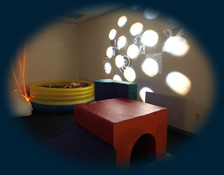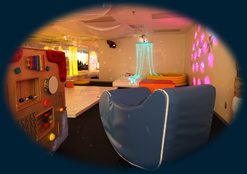Disability is a social construct that the United Nations defines by stating, “Society creates a handicap when it fails to accommodate the diversity of all its members,” and that attitudinal and environmental barriers prevent full, equal, and active participation in society (cited in Priestly, 2001, paras 3 and 4). Persons with intellectual disabilities (ID) are frequently the most vulnerable group and, on many occasions, are exposed to human rights violations and deprived of minimum services and dignity. These persons are also the most likely to be secluded, unable to access basic health and educational services, and excluded from ordinary social relations (World Health Organization, 2004; Leonard & Wen, 2002). Many terms and definitions are used to refer to intellectual disabilities (ID), such as mental retardation, neurological disabilities, mental handicap, and learning disabilities. Nevertheless, all these definitions have three criteria in common: significant limitations in intellectual functioning, significant limitations in adaptive behavior, and manifestation of these symptoms before adulthood. People with ID are limited in their ability to cope with two or more activities of normal daily living (adaptive skills), such as the ability to communicate, live at home, take care of oneself, and be aware of personal health and safety. Particular common features include cognitive deficits (attention, executive functioning, language, and memory), functional difficulties (in activities of daily living), psychomotor impairment (dyspraxia and poor coordination), and behavioral difficulties (aggression, agitation, and wandering). Yet these individuals offer us valuable lesson in life. Individuals with disabilities remind us of our greatest assets, our weakness, and humanness (Vanier, 2002). Individuals with disabilities do the work of the heart (Vanier, 2002).

Rationale – Problem Statement
While multi sensory enrichment (MSE) can be instrumental for children without disabilities as well as those with disabilities, this work will focus on disability, because essential services and educational tools are needed to improve learning, social integration, and the quality of life of individuals with intellectual disabilities. The estimated number of people with disabilities in the USA is 43 million (Colker, 2005). People with disabilities may constitute the largest minority group whose access to public places, education, and the political sphere still has been limited (Rocco & Fornes, 2010). The problems experienced by people with neurological disabilities create barriers to participation in leisure activities and appropriate education.
MSE provides alternative resources for staff, child life professionals, and educators to work purposefully and effectively with people with severe and profound developmental disabilities, autism, mental retardation, dementia, and other disabilities (Haggar & Hutchinson, 1991; Mount & Cavet, 1995; Stephenson, 2002; Williams et al, 2001). By adapting and modifying the environment, children and adults with significant disabilities are enabled and empowered. MSE can foster equality, independence, self-choice, and inclusion.
Society has a moral obligation make sure that all individuals are provided with sensory stimulation. There is an obligation to feed and shelter the poor by those who are in a position to do so because food and shelter are human essentials. Similarly, sensory stimulation is a basic human need that is essential to life and survival, and society has a moral obligation to ensure that every individual has multi sensory stimulation through the use of MSEs. Society must assist those who are unable to access sensory simulation on their own due to disabilities and/or impoverished environments. MSE can be seen as the medium through which an individual lives.
The minimal usage of multi sensory enrichment in North America may be due to limited empirical research and a lack of a theoretical foundation. Most research around MSE today has been based on subjective observation and generally has not been objectively measured (Pagliano, 1999). Anecdotal research and formal evaluations of MSE meet resistance in Europe because there is fear of forcing individuals with disabilities into more structured, oriented therapy, in contrast to freely chosen recreation (Cunningham, Hutchinson, & Kewin, 1991). Unfortunately, all too often, activities for those with disabilities have to be justified on structured therapeutic grounds, although no one disputes the importance of play and self-selected activities for normal developing children (Cunningham et al., 1991) nor our own leisure pursuits (Hutchinson & Haggar, 1991).
Research Questions
Given the observed benefits of MSE for individuals with disabilities, empirical research would strengthen the argument and add to the body of knowledge around theories in special education, therapeutic recreation, neuroscience (Giza, Griesbach, & Hovda, 2005; Hotz et al., 2006) and life quality (Hulsegge & Verheul, 1987). There is a need to develop a clear theoretical basis for the use of MSE, answering questions as to: (a) Why does MSE appear to be so beneficial? (b) Can MSE be used as a formal educational tool built into special education curriculum? (c) Is MSE more effective as a demand-free activity or a controlled therapy? (d) What effect does the facilitator have on the outcome when using an MSE? (e) Is a passive or interactive approach to MSE more effective? (f) How does a natural MSE environment differ from an artificially created MSE?
The Purpose
The purpose of this book is to bring together relevant knowledge that feeds MSE theory and practice. Through an integrated review of the literature and research, new developments and emerging themes around MSE were analyzed in order to develop a conceptual framework and delivery model of MSE. The development of the conceptual framework and delivery model provides direction for further research and confirmation of the conceptual framework and delivery model. The aim is that through the understanding and use of MSE, quality of life, health, and social well-being of people with various challenges will be enhanced.
 The book begins with an overview of MSE, describing its importance and benefits, followed by a proposed conceptual framework developed from new theories in neuroscience and emerging themes in MSE. The book ends with the presentation of an MSE delivery model and provides direction for future practice and research.
The book begins with an overview of MSE, describing its importance and benefits, followed by a proposed conceptual framework developed from new theories in neuroscience and emerging themes in MSE. The book ends with the presentation of an MSE delivery model and provides direction for future practice and research.
Method – Structured Review of the Literature and Research
The structured literature review focuses on the research and use of multi sensory environments as an intervention for education, leisure, recreation, and therapy for individuals with various disabilities. The review also looks at animal research in the area of enriched environments and their effect on neurology and the brain. Computerized data bases (ERIC, ProQuest, Wilson Web, PsychArticles, MedLine, and Science Direct) were searched from 1966 to the present (2009). The year 1966 was chosen as a starting point because the first reference found in the use of sensory stimulation as a means to enhance the quality of life of individuals with developmental disabilities occurred in 1966 with an article on sensory cafeteria authored by Cleland and Clark.
The first set of key words used for these searches were multi sensory environment and the plural, multisensory environment and its plural, sensory environment, snoezelen, multi sensory stimulation, multisensory stimulation, sensory stimulation, and enriched environments. The same data bases were then searched using sets of two key words. Each key word from the first set was paired with each word from a second set (i.e., neural oscillations, neural synchronization, cognitive processes, sensory processing, developmental disabilities, cognitive impairment, mental retardation, Alzheimer, autism, intellectual disabilities; neuroscience, brain plasticity, and neural messengers [espeptides]). The reference list of each article was reviewed to identify additional citations that were not revealed by other search means.
Fifty-seven relevant articles on MSE were found. Sorted by journal type, 71% were found in practitioner journals, 15% in academic journals, and 14 % in both practitioner journals and academic conference proceedings. Regarding the content focus of MSE, about 80% were written from a recreation/leisure perspective and 20% from a therapy perspective. The relevant articles included: (a) definition and designation of the practice, (b) description of specific methodologies by practitioners in the field, and (c) case studies of MSE. Of the 57 articles on MSE, only six were research articles, including two quantitative and four qualitative studies, indicating that little empirical research has been conducted on this practice
In addition to contents of these articles, book chapters and discussions on MSE were reviewed. Duplicate articles were eliminated as were irrelevant articles. Articles that did not pertain to individuals with disabilities or were unrelated to sensory stimulation or sensory enrichment were considered irrelevant.